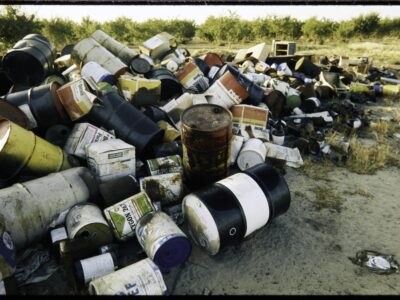A good time to think about off-shore energy

Rick recently pointed out the ironic timing of the tragic Deepwater Horizon oil rig explosion. The news from the Gulf in the wake of that explosion just gets worse. The first report was that the well had sealed. Offshore wells have “blowout preventer” valves which are supposed to shut in the event of an emergency like this. But for some reason this one did not work. When the leak was discovered, it was first reported to be about 40,000 gallons a day, and there was hope that it could be stopped within hours. Now, Coast Guard officials say, based on the size of the oil slick rapidly spreading across the surface, that the well is spewing (leak seems far too mild a word) 5,000 barrels, or more than 200,000 gallons per day. That would make the spill already as big as the 1969 Santa Barbara spill Rick mentioned. There is now no estimate on when the well might be sealed. And winds are pushing the slick toward the Gulf Coast and Mississippi River Delta where it could threaten more than 400 species, from marine mammals to fish, shellfish, and waterfowl.
Against the backdrop of that stark reminder of the human and environmental costs of fossil fuel development, Interior Secretary Salazar yesterday announced approval of the Cape Wind Energy Project in Nantucket Sound. Interior’s Minerals Management Service will offer to lease federal offshore lands for the installation of 130 wind turbines. The decision requires several measures to reduce the visual impact of the turbines from the coastline while retaining their visibility to birds. Additional underwater archeological surveys will be conducted to look for cultural resources that might be affected by the operation. More federal review will also be required before Cape Wind can construct commercial facilities. A coalition of project opponents immediately promised a lawsuit raising a range of legal issues, but apparently focusing on the Endangered Species Act.
Renewable energy advocates have been understandably frustrated at the slow pace of proceedings on Cape Wind, which originally applied for a permit in November 2001. Given the clear environmental harms of fossil fuel use, they think their projects should be fast-tracked to help wean the economy from that dependence. Certainly the recent events in the Gulf (and at West Virginia’s Upper Big Branch coal mine) are a reminder that alternative energy development should not be held to a no-impact expectation.
But neither should it be given a free pass. Neither hydro nor nuclear power generation directly generate greenhouse gas emissions, but no one contends that they should not undergo serious environmental review. Some wind and solar advocates seem to have been thinking that their projects, because they are so green, should be treated differently. That attitude doesn’t, and shouldn’t, fly. Wind project developers recently learned that the hard way in West Virginia, where their refusal to apply for an incidental take permit under the ESA for the effects of turbines on the Indiana bat resulted in litigation that has temporarily halted the project. (See Animal Welfare Institute v. Beech Ridge Energy, 675 F. Supp. 2d 540 (D. Md. 2009).)
I don’t know enough about the Cape Wind project or location to have an opinion on the substantive merits of the project or its environmental impacts. But from my perspective, the process has been just about right. Sure, it’s taken 10years. But a lot of that has been due to the fact that its the first large proposal of its kind. The federal government needed to create, and has now created, a new process for evaluating off-shore alternative energy projects. And environmental analysis is always more challenging for the first large project, because there are very real gaps in understanding how the environmental impacts of, for example, large wind farms, will play out over time.
It makes sense to try to streamline analysis of alternative energy projects over time. The federal government should commit resources to providing technical assistance to guide that analysis, and to take advantage of informational economies of scale, to the extent possible. In some cases, it may be that we face necessary environmental trade-offs, and some impacts on birds, bats, tortoises, or other resources might be a good trade for reduced greenhouse gas emissions. But we should keep two things in mind:
(1) There is a source of new energy out there with a zero environmental impact footprint, but its not renewables. It’s reducing energy use, and there is still a lot of low-hanging fruit out there on that front.
(2) Since 1970, we’ve had a policy at the federal level of understanding the environmental impacts of our actions before we commit to them. It’s true that sometimes the NEPA process, and other environmental review requirements, seem ridiculously lengthy. Of course we should not unnecessarily multiply or expand analytical requirements. But environmental study is important, especially for large-scale development of new technologies. When we have skipped that step, it’s sometimes come back to bite us, as with contamination of water supplies by the fuel additive MTBE. We don’t need to be in such a rush to commit to renewable energy development that we ignore other environmental goals. That would be like saying we should exempt fuel-efficient cars from basic safety requirements.







Reader Comments